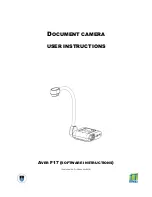
V1.02
Thom Hogan’s Complete Guide to the Nikon D300
Page 686
Ultraviolet
Most glass used in lenses does a poor job of transmitting
ultraviolet light through to the imager. That, coupled with the
insensitivity to ultraviolet of the sensor makes taking
ultraviolet images difficult, almost impossible, with the D300.
Nikon made a special lens, the 105mm UV Micro-Nikkor
f/4.5, specifically for lab work that needed a lens that
efficiently passed low wavelength light to the film plane (and
also did so without needing focus adjustments). Couple this
lens, which passes 70% of the light from 220 to 900
nanometers, with a filter that blocks the visible spectrum and
you can take some very interesting pictures.
Indeed, one Scandinavian photographer, Bjørn Rørslett, has
specialized in doing just that (
http://www.naturfotograf.com/index2.html
and click on
UV Color
in the left navigation bar). Coupling a
Hoya U-360 filter that blocks the visible spectrum with a
Tiffen Hot Mirror filter to hold back the near infrared
spectrum slightly, he takes what he calls “invisible images”
using his Nikon bodies. (You can also use a Nikon FF or a
Wratten 18A to block visible light, by the way.) Note that if
you try to duplicate his work with a regular lens, you’ll find
that exposure times are exceedingly long on a D300 (as I
noted earlier, most glass in regular lenses isn’t very efficient in
passing ultraviolet light, and the D300 isn’t very responsive to
UV, either). You may have to fiddle with focus adjustments,
as well (lenses are generally optimized to focus only the
visible spectrum at the film plane). If you really get into UV
photography, note that Nikon made a UV lens, the 105mm
UV Micro-Nikkor f/4.5, and a UV flash, the Speedlight SB-
140, which, though hard to find, would allow you to take
your experiments indoors, as well.
Still, the bottom line is simple: if you’re really into UV
shooting, get a different Nikon DSLR, preferably one of the
first generation models (D1 series or D100). As Bjørn notes in
his review of the D3, the latest Nikons just aren’t very
responsive to UV, making using them for such work very
















































